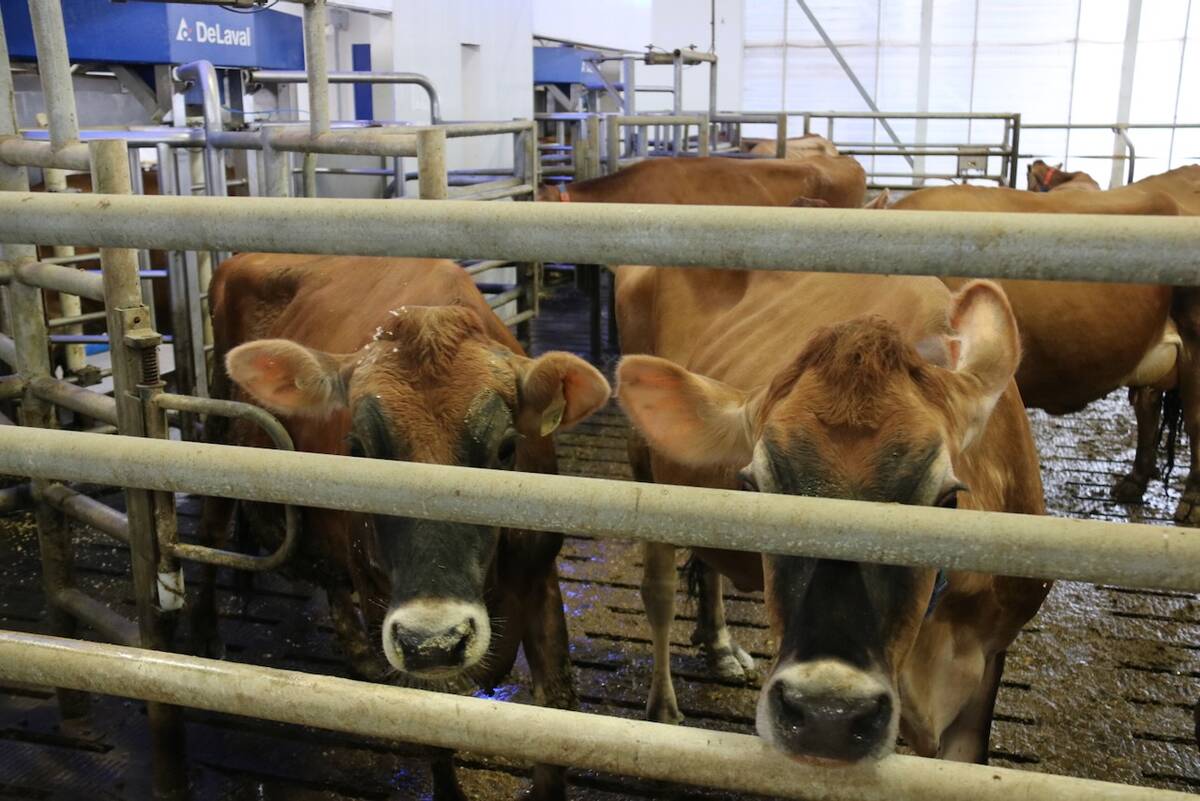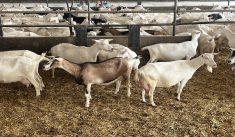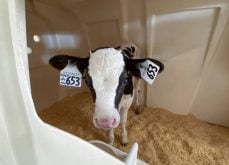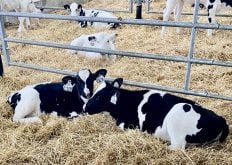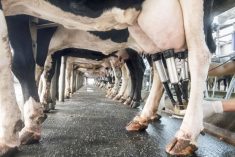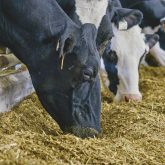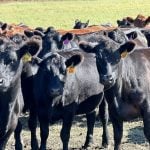Lactanet’s Metabolic Disease Resistance genetic index expands to include four dairy cattle breeds with lower population sizes in Canada.
The soon-to-be-introduced Metabolic Disease Resistance (MDR) index for Brown Swiss, Guernsey, Canadienne and Milking Shorthorn will focus, for now, on a single parameter: risk level for subclinical ketosis, unlike higher-population Holstein, Jersey and Ayrshire breeds, for which MDR also includes risk for displaced abomasum and clinical ketosis.
Why it matters: Decreasing the percentage of offspring susceptible to disease once they join the milking herd enhances dairy profitability.
Read Also
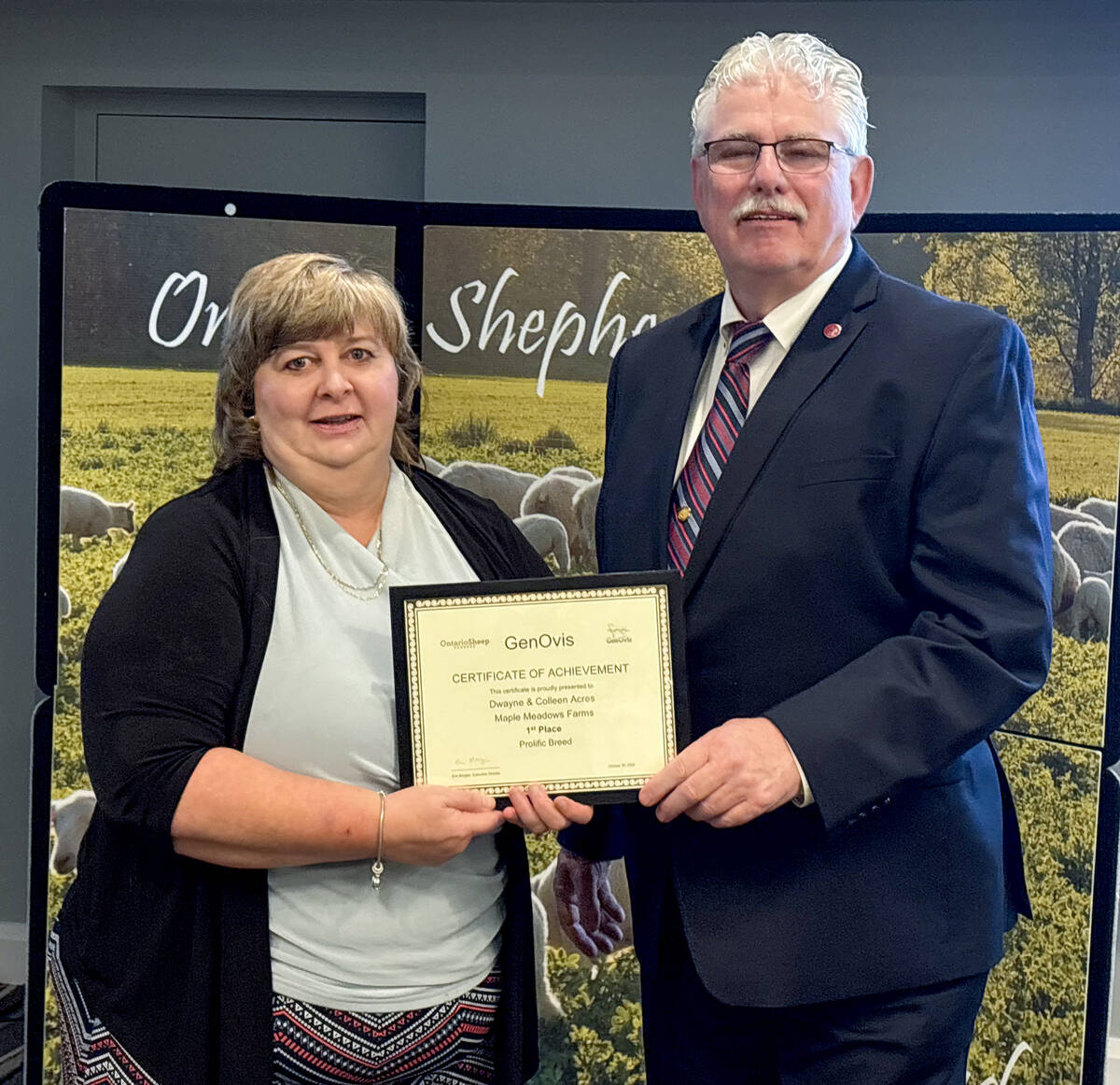
GenOvis awards presented at Ontario Sheep Farmers’ annual meeting
Producers and youth were recognized for their contributions during the Ontario Sheep Farmers’ annual GenOvis and leadership awards.
Allison Fleming, manager of Genetic Evaluation Services for the national milk recording and genetic testing organization, provided an update about the MDR index at Lactanet’s recent Open Industry Session (OIS) on Oct. 22.
She explained that the index for lower-population breeds could be available as early as December 2025, but it depends on approval from the dairy genetics sector’s stakeholder-based Genetic Evaluation Board.
Fleming said there was insufficient data in 2016 on ketosis and displaced abomasum incidents from Brown Swiss, Guernsey, Canadienne and Milking Shorthorn herds to allow for an MDR index. In the three other breeds, however, there was enough data to determine relationships between parentage and the risk for these conditions once the offspring joined the milking herd.
Following the OIS, Fleming told Farmtario that the justification for taking MDR into account in breeding decisions remains largely the same as in 2016 when it was developed.
“I reran some estimates for the Holstein breed using today’s data, and the values are very similar,” she said of the 2016 CDN article. “For Holstein, a 10-point difference between sires for MDR, on average, translated to sires having five per cent more healthy daughters for subclinical ketosis, 2.3 per cent for clinical ketosis and 1.9 per cent for displaced abomasum.”
“Genetic selection for improved resistance to metabolic disease,” Fleming added, “remains important due to potential economic loss associated with them. Subclinical ketosis is associated with impairment in milk production, fertility, and higher chances of culling, while clinical disease can have the same impacts along with costly veterinary treatment and recovery – especially with cases of displaced abomasum.
It wasn’t until now, when enough data had been collected on the four less populous breeds, that Lactanet could confirm that the genetic relationship to subclinical ketosis is similar to that in Holsteins, Jerseys and Ayrshires.
Milk samples from cows in the first stage of lactation are used to determine risk for subclinical ketosis, and Lactanet now has over 7,000 records for Brown Swiss and nearly 1,500 for the other three breeds.
Lactanet estimates that about 120 Brown Swiss bulls could show favourable results from introducing a subclinical ketosis risk index, along with between 25 to 30 bulls in the other three breeds. Fleming added the organization’s analysis suggests the index’s reliability will be close to, or above, 50 per cent for all bulls, and up to 60 per cent for some Guernsey bulls.
The MDR index for the lower-population breeds will only include sub-clinical ketosis risk, because there isn’t enough data for displaced abomasum or clinical ketosis to include those parameters in the breeding tool.
“There is no timeline to be able to include the (clinical ketosis and displaced abomasum) in the four smaller population breeds in Canada,” Fleming told Farmtario. “It is difficult to ever get sufficient recording because of the small number of herds and the low incidence of these health events.”



